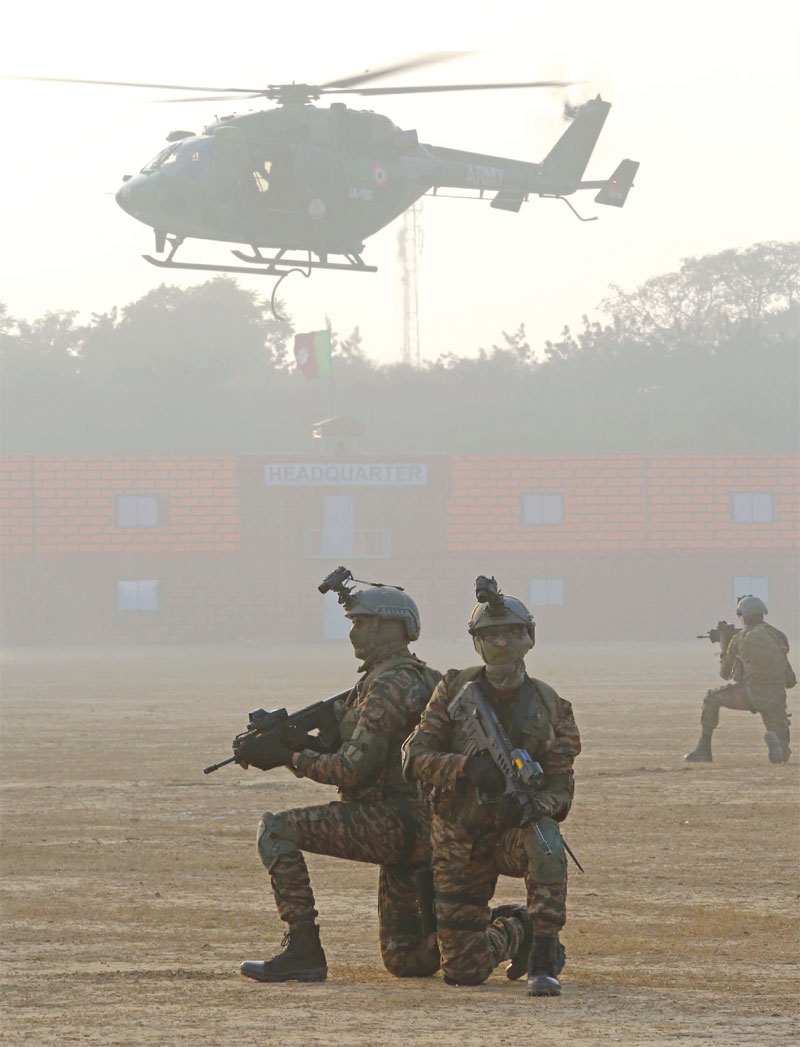Politicisation & Preparedness
Pravin Sawhney
India’s most ambitious and totally outdated military reform ‘Integrated Theatre Commands (ITCs)’ is dead since it was never a serious proposition. ITCs meant that elements of the three military services (two, army and air force, in case of land wars on the Line of Actual Control with China and the Line of Control with Pakistan) be brought permanently under a single commander for jointness and synergy in operations.

Jointness in operations implies that all services fight together as a ‘joint force’, and synergy means that they should be able to complement one another. For instance, army assets in the land domain should have the capability to hit enemy’s assets in the air domain, such as fighters or incoming missiles. Thus, for land war, the ‘joint force’ would comprise army and air force assets with cross-domain capability and with army as the lead service since boots on the ground are essential for occupation of territory.
Behind the veneer of ITCs which involved major structural reforms, the real purpose of the Modi government was to kill two birds with a stone: Retain superannuating army chief, General Bipin Rawat in uniform to ensure that the military served the ruling political party’s agenda rather than the national interest that it was constitutionally sworn to do. And to project the government’s commitment to national security by ostensibly undertaking long pending military reforms to strengthen war-preparedness. Never mind that those reforms were past their expiry dates.
The two overdue reforms were: the post of Chief of Defence Staff (CDS) as suggested by the 2002 Group of Ministers recommendations following the Kargil review committee report, and the recommendation of the December 2016 Shekatkar committee report to create ITCs to fight better on the military lines with Pakistan and China. These committees were constituted by the Vajpayee and Modi-led BJP governments respectively.
A bit on why Rawat was ideal for the post of the CDS as envisioned by the Modi government, since he was past master at projecting military victory where there was none. During his three years tenure as army chief, Rawat planned the so-called 2016 surgical strikes and the 2019 Balakot air strikes against Pakistan. He also flexed military muscle against the People’s Liberation Army (PLA) during the 2017 Doklam crisis which resulted in projecting Prime Minister Narendra Modi—by nationalistic and unscrupulous mainline media—as the sole leader with courage to challenge both adversaries at once. The reality was all three episodes were disastrous for India as they exposed the operational shortcomings of the Indian Army and the Indian Air Force (IAF). This led China to conclude that India did not have the political will for escalation to hot war beyond grey zone operations. Confident of its assessment, the PLA occupied some 2,000 square kilometres of Indian territory by multiple deep incursions in east Ladakh in April 2020.
Thus, towards the fag end of his tenure, Rawat made the case of how his continuation in service as India’s first CD
Subscribe To Force
Fuel Fearless Journalism with Your Yearly Subscription
SUBSCRIBE NOW
We don’t tell you how to do your job…
But we put the environment in which you do your job in perspective, so that when you step out you do so with the complete picture.







